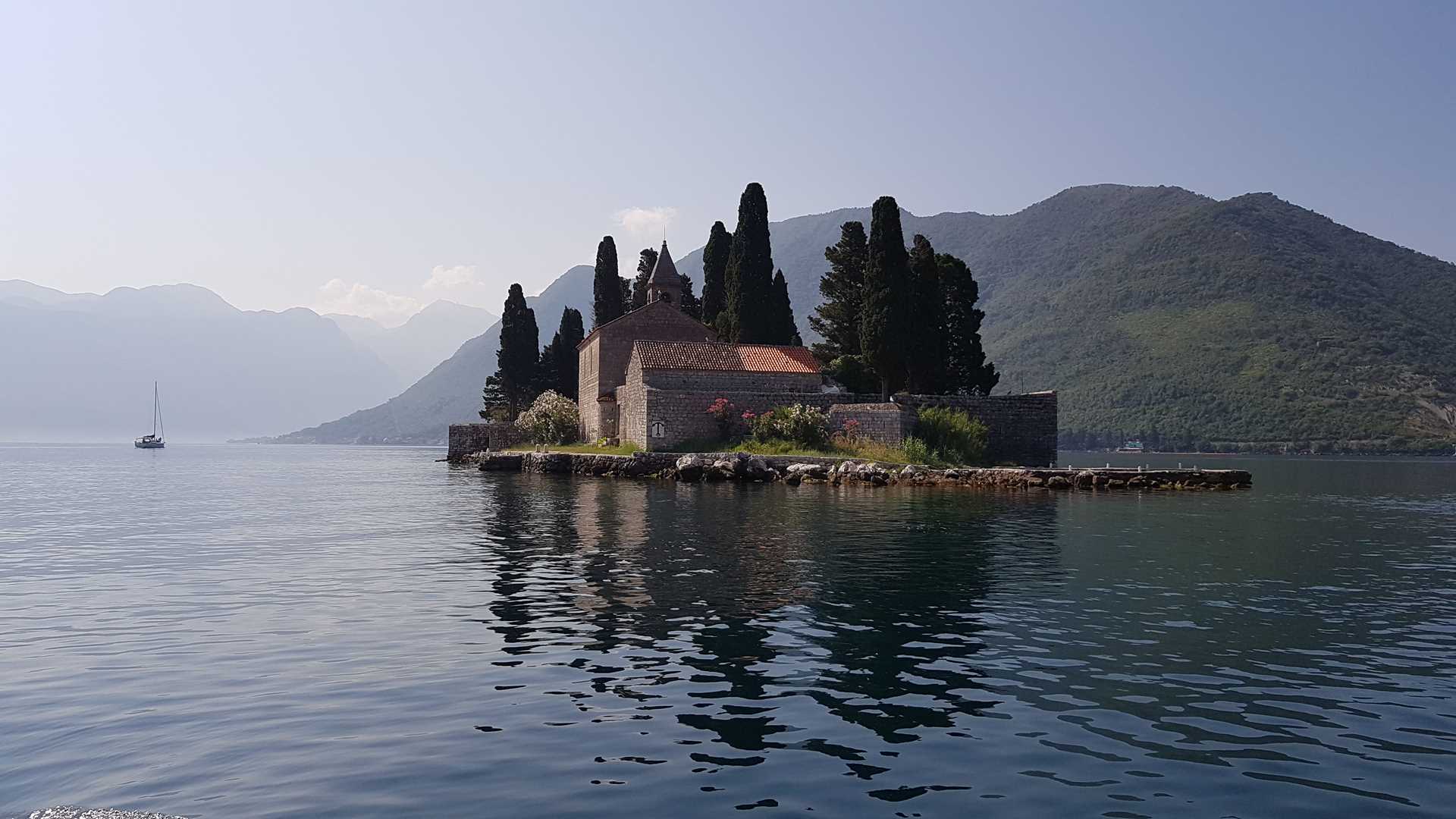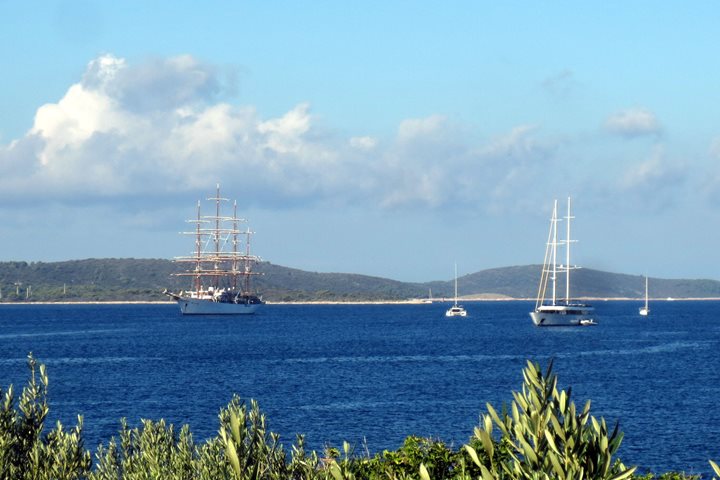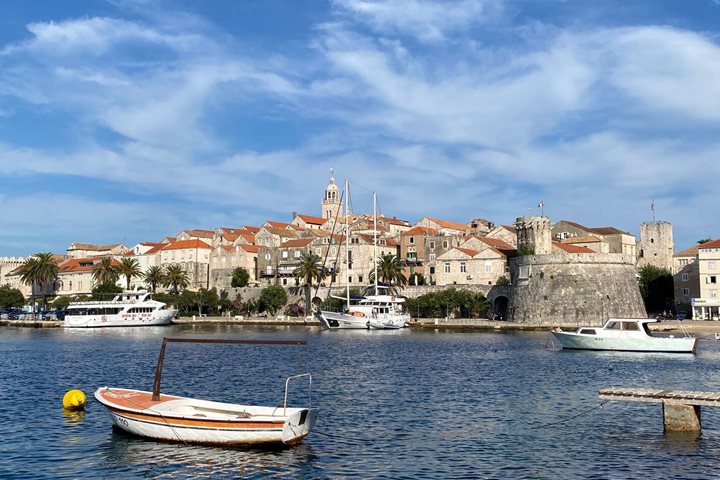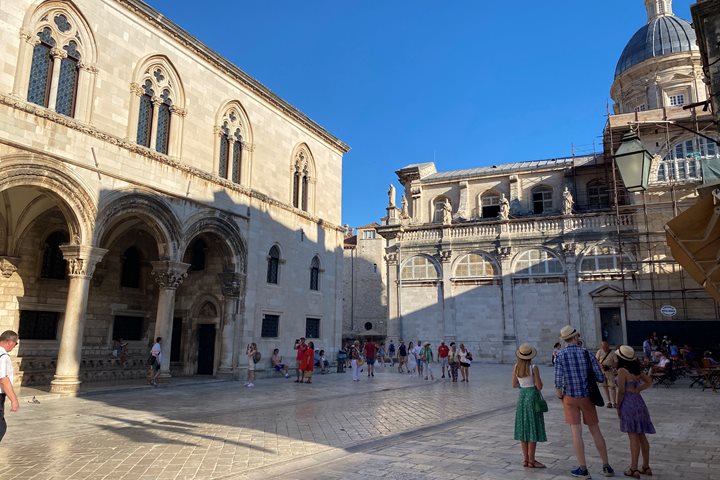We entered the stunning Kotor Fjord at 5:30 a.m. as the sun was just touching the black mountains of Montenegro. This magnificent 11-mile-long fjord is, strictly speaking, not a fjord since it was created by a river and not glacial ice. However, that is merely an academic distinction because as the Sea Cloud motored deeper into the fjord, the mountains rose steeply on both sides and at its narrowest point, the mountains are only 900 feet apart. We passed the prosperous village of Perast on our port side before docking at Kotor.
We then boarded coaches for our first visit to the beautiful village of Perast, a formerly wealthy community of sailing captains and aristocratic families with strong ties to Venice from 1400 until Republic of Venice’s demise in 1797. Our first stop was to the fabulous unfinished baroque church of St. Nikola. If completed it would have been one of the largest churches in the world in a village with a population of less than 700 souls at its highest! After our visit to St. Nicholas, we stopped in the village and had refreshments at the picturesque Hotel Conti. We then boarded small motor launches and visited the artificial island of “Gospa od Skrpjela” in the middle of the fjord. This jewel-like place with the sky-blue dome has a rich history. Legend says fishermen found an icon floating near this spot, retrieved it, and brought it back to St. Nikola. The next day the icon was gone and found floating at the same spot in the fjord. This cat-and-mouse game continued for some time. Finally, the fishermen decided that every time one of them passed this place they would drop rocks in the sea. Gradually it formed an island, and, in the end, they erected a church to the Virgin Mary and placed her icon in the church on this island.
After a visit to a local maritime museum, we sailed out to the narrowest part of Kotor Bay where the great chain was stretched to block marauding pirates from attacking Kotor and Perast. We boarded coaches on the other side of the bay and traveled the 3000-foot-vertical climb up the infamous 25-switchback road to the village of Njegusi. There we had a fabulous lunch of the justifiably famous dried and smoked Montenegrin ham, followed by veal and chicken, and of course glasses of local rakia, a local (and strong) grappa. Our next stop was the walled city of Kotor. Our guide Ryan led us on a lovely walk through the old city. The Cathedral of St. Tryphon is particularly interesting because of its intact Romanesque interior with a Baroque façade. Of special beauty is the marble baldachin over the main altar, elaborately carved and possibly dating back to the 13th century. Some of the original boldly-colored Romanesque frescoes still survive on the walls and the archway ceilings. The present Romanesque church is built on the foundation of an earlier 9th-century church that was built and paid for by a man named Andre Saracensis, meaning “Andrew the Saracen.” I don’t know what to make of a saracen paying to build a Catholic church, but stranger things have happened.
In the evening, we sampled fresh Montenegrin oysters and champagne on the lido deck cruising in Kotor Bay! Tomorrow we sail to the mysterious country of Albania.









